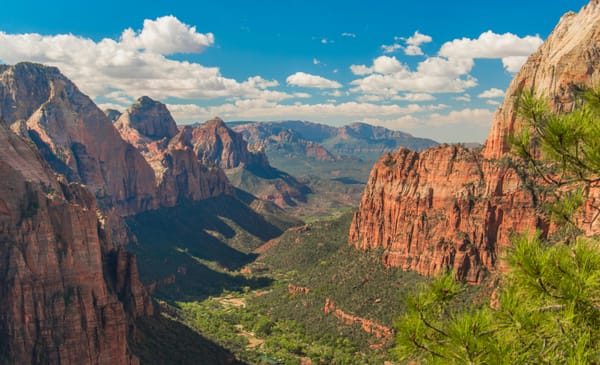Monday☕️

Economics & Markets:
- Today’s commodity market:

- Today’s crypto market:
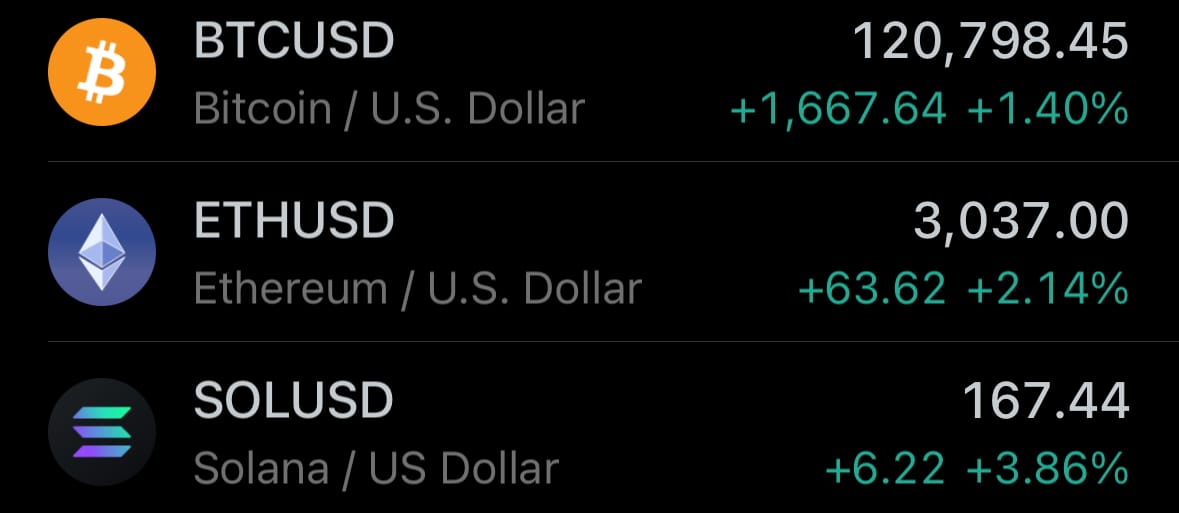
Geopolitics & Military Activity:
- As of Today, July 14, 2025, intense clashes continue in eastern Sweida, Syria, between local Druze factions and fighters from Hayat Tahrir al-Sham (HTS), led by Ahmad al-Sharaa (formerly Abu Mohammed al-Julani). The violence erupted on July 13 in the Maqwas neighborhood, initially sparked by disputes over local control and security arrangements, escalating into heavy fighting with gunfire and displacement. Reports from the Syrian Observatory for Human Rights and local sources indicate at least 37 deaths, including civilians, and dozens injured, with Druze militias mobilizing in response to perceived HTS encroachments. HTS has deployed forces to de-escalate, but tensions remain high amid accusations of government inaction.
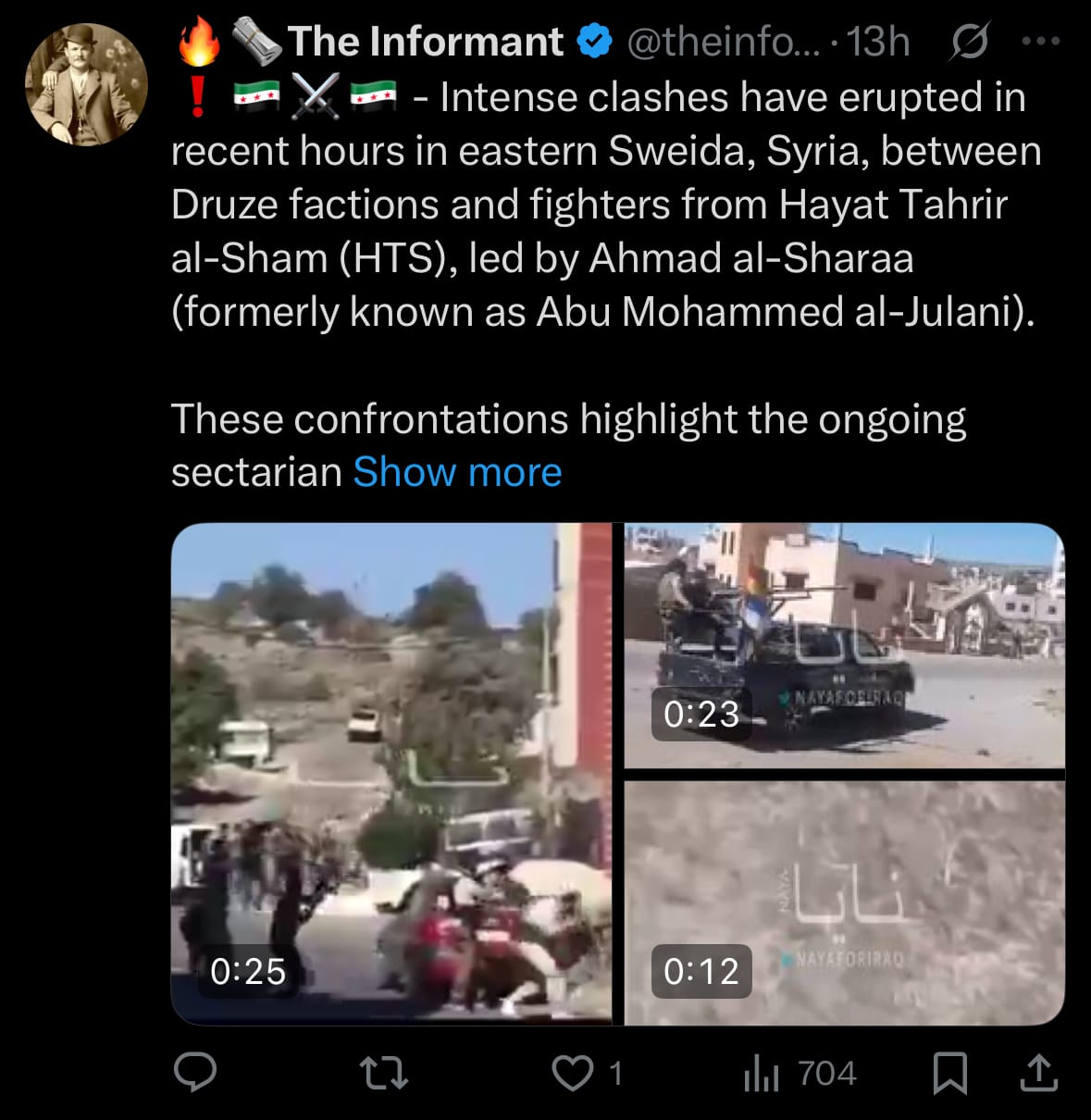
- These clashes reflect ongoing sectarian tensions in post-Assad Syria, following HTS's overthrow of the regime in December 2024. The Druze community, about 3% of Syria's population and concentrated in Sweida and southern Damascus, maintains semi-autonomous militias due to fears of persecution by Sunni Islamist groups, rooted in events like the 2018 Islamic State attack that killed over 250 in Sweida. Similar violence occurred in April and May 2025, causing over 100 deaths amid disputes over disarmament and governance. External influences, including Israeli airstrikes in southern Syria claimed as protective measures for the Druze, have been rejected by local leaders as efforts to expand influence, further complicating the fragile security landscape.
Environment & Weather:
- As of Yesterday, July 13, 2025, the Deer Creek Fire in southeastern Utah remains out of control. It has burned 8,925 acres with 0% containment. The fire started on July 10 near Old La Sal in San Juan County. Dry winds, low humidity, and high temperatures are fueling its fast spread. Over 300 firefighters, plus helicopters and planes, are battling the blaze. Crews have had to pull back from some areas for safety. Evacuation zones have grown to include places up to the Colorado state line. Weather forecasts predict more tough conditions ahead. Teams are protecting homes along Highway 46 and building fire lines. No one has been hurt, but at least five buildings are destroyed.
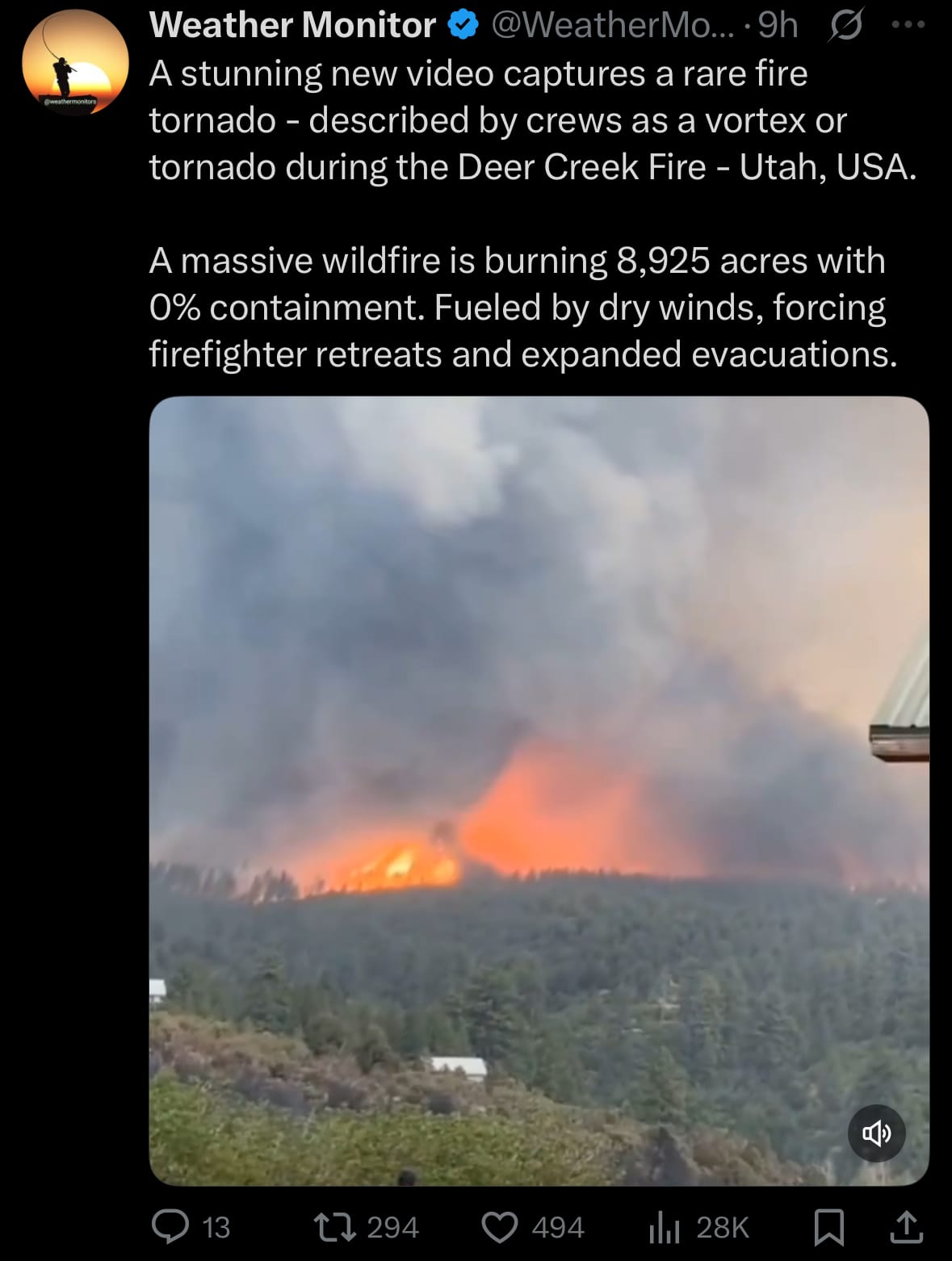
- One dramatic event was a rare fire tornado on July 12. Fire crews called it a "vortex" or "firenado." It formed from the fire's intense heat and strong winds. The tornado threw debris like trees and building parts high into the air and tore roofs off houses. Videos and radar showed it spinning up to 6,000 feet. This made the fire even more dangerous by spreading embers and starting new spot fires. It led to wider evacuations and power outages. The fire is nearing Colorado, where the governor declared a disaster. This highlights growing wildfire dangers in the dry West. Officials are investigating the cause. Residents should check official sources for updates and stay alert.
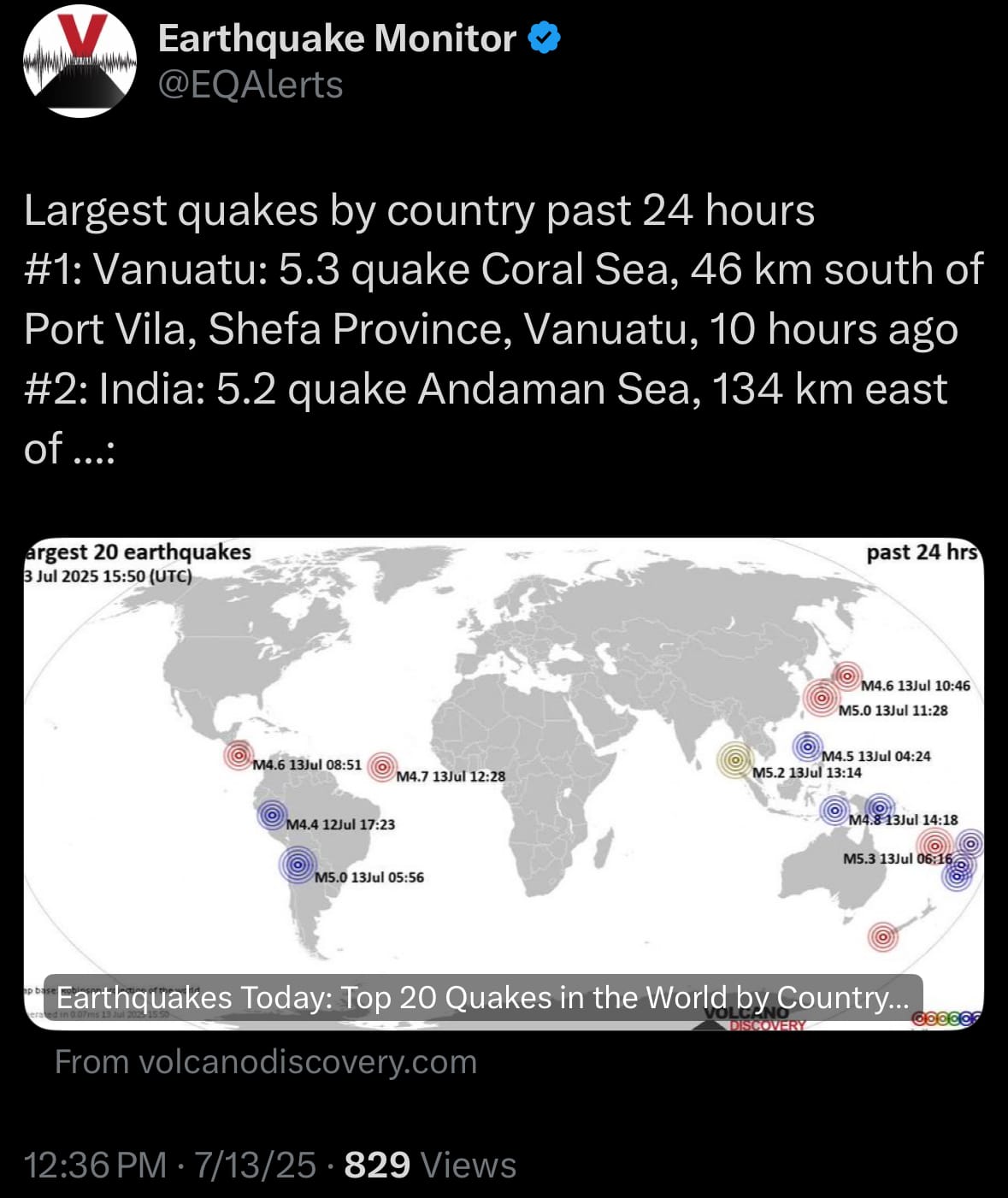
Space:
- On July 13, 2025, SpaceX launched the Dror-1 geostationary communications satellite aboard a Falcon 9 from Space Launch Complex 40 at Cape Canaveral, Florida, at 1:04 a.m. EDT (0504 UTC). This launch, SpaceX’s 500th Falcon 9 mission and 84th of 2025, saw the first-stage booster B1083 land on a droneship 8.5 minutes after liftoff, achieving the company’s 476th booster recovery. Dror-1, a 4.5-ton satellite developed by Israel Aerospace Industries for approximately $200 million, features an advanced digital communication payload with multiple frequency bands and a modular architecture for in-orbit reconfiguration. Designed for a 15-year lifespan in geostationary orbit at 36,000 kilometers, it supports secure communications for military, government, and civilian applications, reducing Israel’s dependence on foreign satellites.
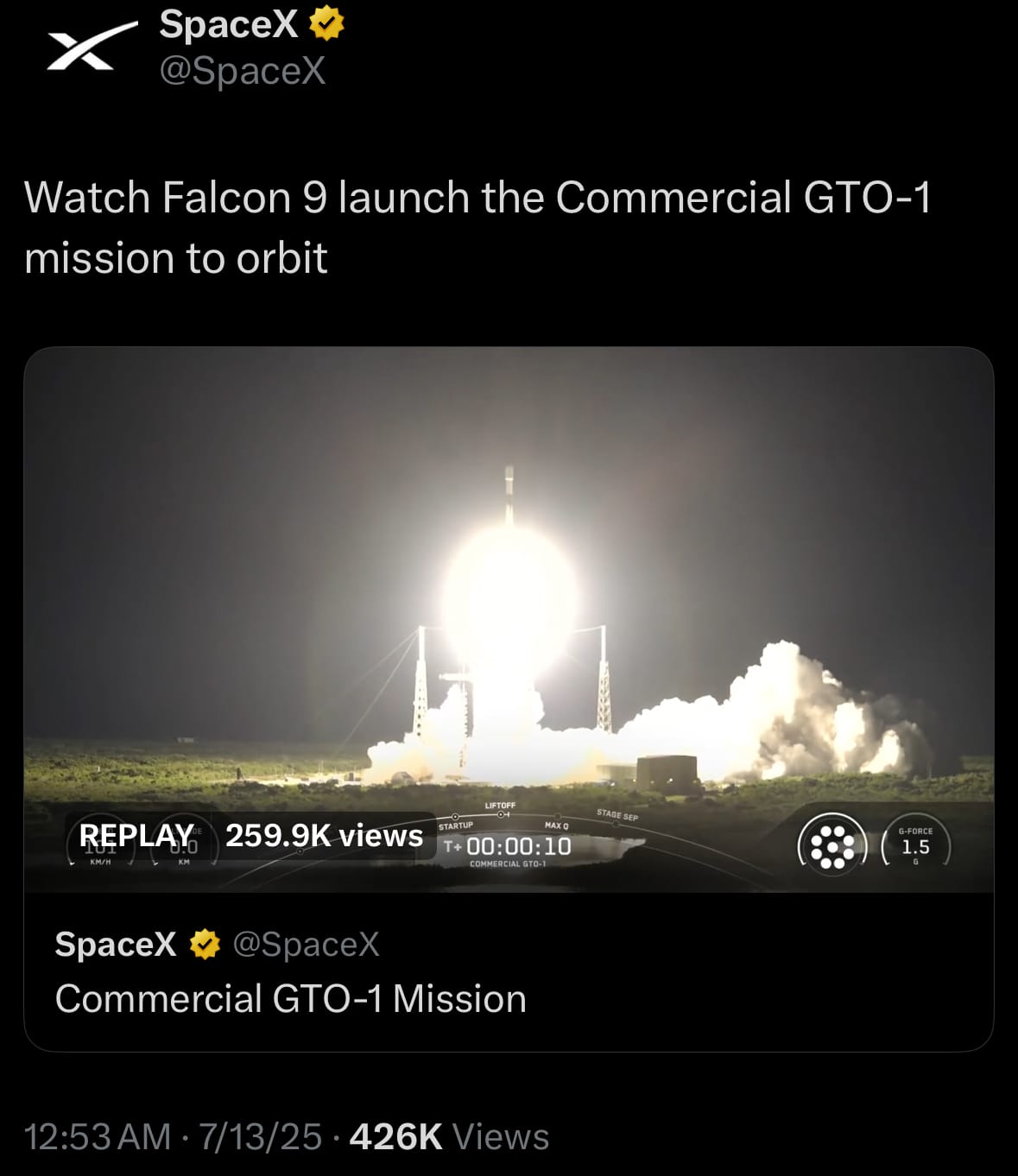
- Dror-1 was deployed into a geostationary transfer orbit and will maneuver to its final 36,000-km orbit over two weeks, with testing completed and operations starting by late August 2025. Geostationary orbits, where satellites maintain a fixed position relative to Earth, are commonly used for communications, weather monitoring, and broadcasting satellites due to their stable coverage of specific regions. These satellites, including television broadcast systems like Intelsat and SES, meteorological platforms like GOES, and military communication systems, benefit from the orbit’s high altitude, enabling wide-area signal transmission with minimal ground station tracking. Dror-1’s advanced payload aligns with this trend, offering flexible, high-capacity communication capabilities. No anomalies were reported during the launch or deployment.
Science & Technology:
- This month, Jack Dorsey (Twitter founder) launched a decentralized messaging app called Bitchat as a personal "weekend project" on July 6, 2025, designed for offline communication without needing internet, cellular data, servers, or user accounts—unlike traditional internet-based apps like WhatsApp or Signal, which depend on constant online connections and central servers. Bitchat instead uses Bluetooth Low Energy technology to form a mesh network, where devices connect directly and relay messages within about 300 meters (984 feet), supporting up to seven hops to extend range in groups. This suits signal-free spots like remote areas, airplanes, festivals, or outages, where online messaging fails. Features include end-to-end encryption with secure key exchange and content protection, optional channel passwords, and a store-and-forward mechanism to deliver messages when recipients reconnect via Bluetooth.
- The retro IRC-like interface uses simple commands such as "/join #channel" for groups or "/msg user" for privates, plus privacy aids like temporary IDs, dummy traffic to mask activity, and quick data erasure by triple-tapping the logo. Developed mainly in Swift for iOS and macOS, it's open-source on GitHub, with a community Android port for cross-platform chats. While internet apps provide worldwide access, unlimited range, and extras like video or large files over data, Bitchat focuses on local, durable chats in offline settings but requires physical proximity and omits those features, drawing interest for emergencies or restricted zones.
Statistic:
- Largest assets on Earth by market capitalization:
- GOLD: $22.590T
- 🇺🇸 NVIDIA: $4.022T
- 🇺🇸 Microsoft: $3.740T
- 🇺🇸 Apple: $3.153T
- Bitcoin: $2.402T
- 🇺🇸 Amazon: $2.388T
- SILVER: $2.192T
- 🇺🇸 Alphabet (Google): $2.192T
- 🇺🇸 Meta Platforms: $1.804T
- 🇸🇦 Saudi Aramco: $1.617T
- 🇺🇸 Broadcom: $1.290T
- 🇹🇼 TSMC: $1.194T
- 🇺🇸 Berkshire Hathaway: $1.026T
- 🇺🇸 Tesla: $1.009T
- 🇺🇸 JPMorgan Chase: $797.20B
- 🇺🇸 Walmart: $753.35B
- 🇺🇸 Eli Lilly: $711.91B
- 🇺🇸 Visa: $679.68B
- 🇺🇸 Oracle: $647.60B
- 🇨🇳 Tencent: $572.55B
- SPY: $572.34B
- 🇺🇸 Netflix: $529.88B
- 🇺🇸 Mastercard: $499.60B
- 🇺🇸 Exxon Mobil: $497.46B
- 🇺🇸 Costco: $430.31B
History:
- Bitcoin’s history began in 2008 when Satoshi Nakamoto, a pseudonymous figure, released a whitepaper outlining a decentralized digital currency using blockchain technology to enable peer-to-peer transactions without intermediaries. Launched in 2009, Bitcoin initially gained traction among cypherpunks and libertarians on forums like Bitcointalk, drawn to its censorship-resistant and trustless design. Early years saw it labeled a scam by critics, including major institutions like JPMorgan, which in 2017 called it a "fraud." Despite volatility and regulatory hurdles, Bitcoin’s price hit $1,000 by 2013, fueled by growing adoption. Its capped supply of 21 million coins and secure, transparent ledger attracted those seeking an alternative to fiat systems, though skepticism persisted due to price swings and energy-intensive mining.
- As of today, July 14, 2025, Bitcoin reached an all-time high of $120,000, reflecting a seismic shift in perception. Institutions once dismissive, like BlackRock and Fidelity, now offer Bitcoin ETFs, while companies like MicroStrategy hold billions in Bitcoin as a reserve asset. Its value lies in its scarcity—often called "digital gold"—and its decentralized nature, offering a hedge against inflation and centralized control. Bitcoin’s global accessibility empowers the unbanked, and its fixed supply resonates amid fiat currency devaluation. Despite ongoing debates over energy use and volatility, Bitcoin has evolved from a fringe concept to a trillion-dollar asset, embraced by retail and institutional investors alike for its potential to redefine finance.
Image of the day:

Thanks for reading!
Earth is complicated, we make it simple.
Click image to view the Earth Intelligence System:
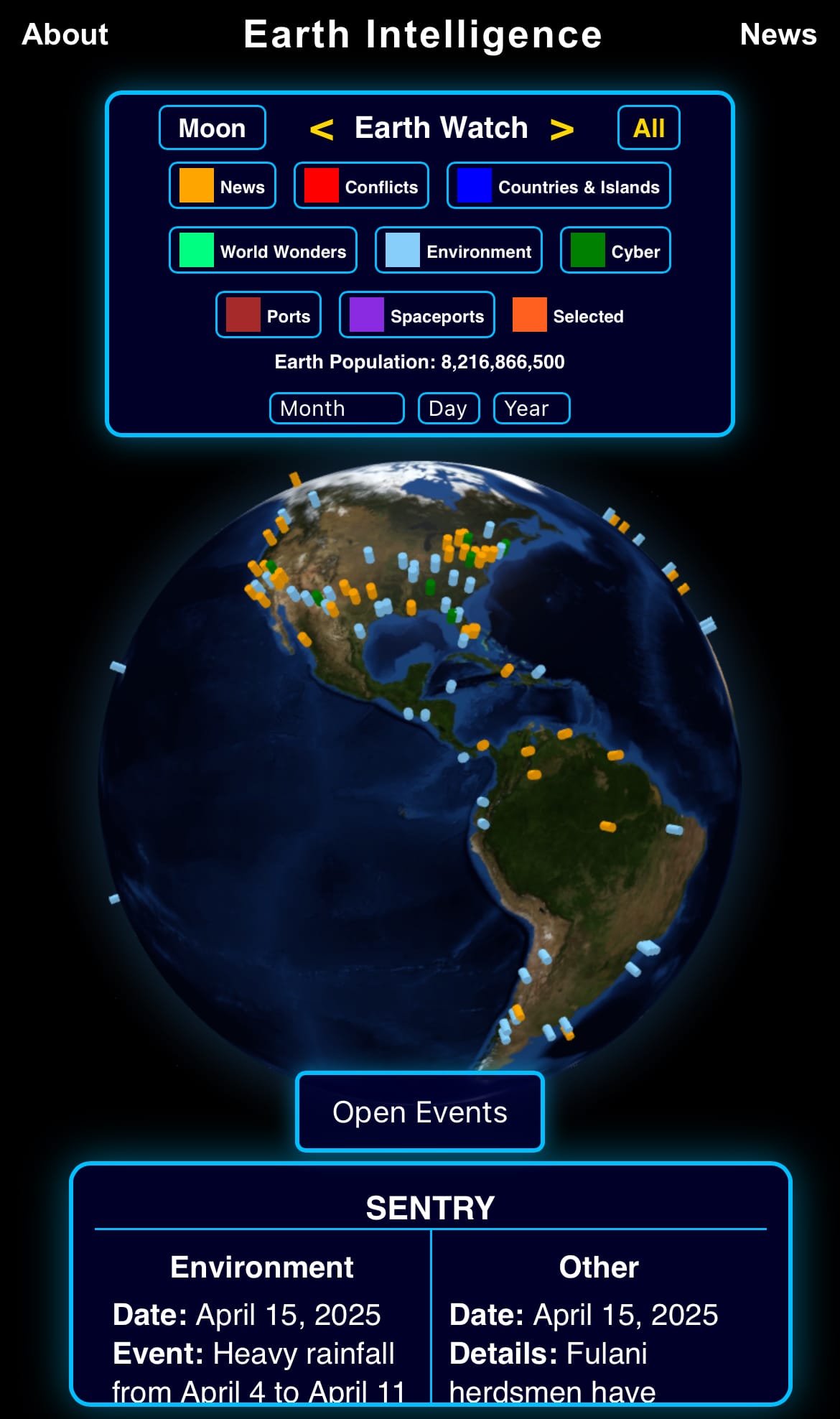


Support/Suggestions Email:
earthintelligence@earthintel.news



